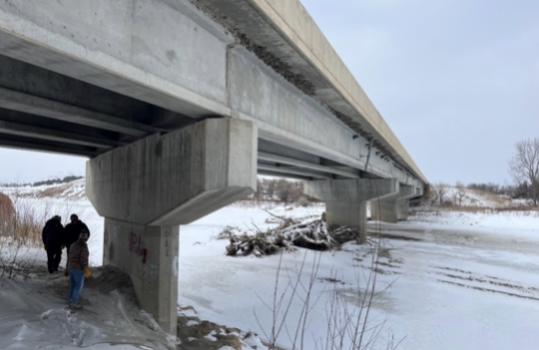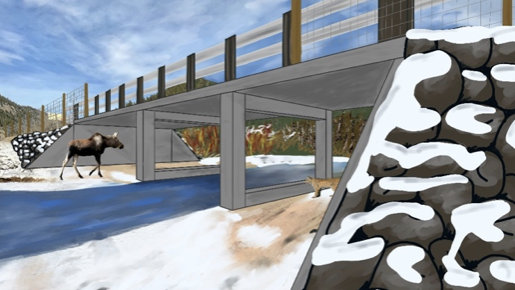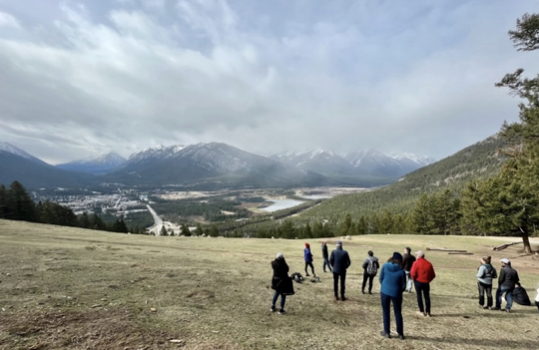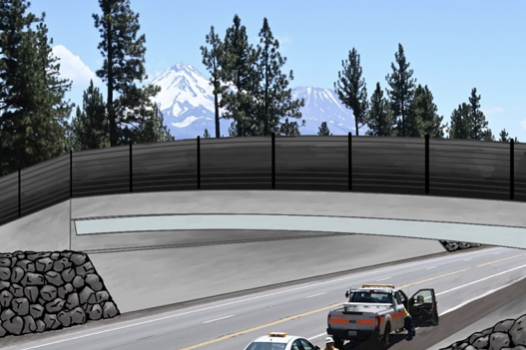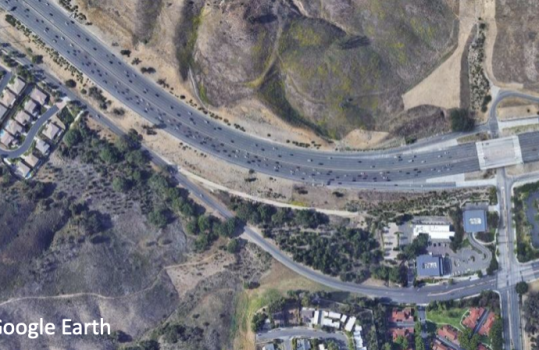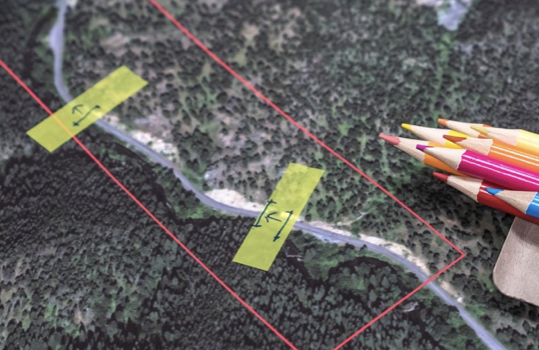Wildlife Infrastructure
2022 New Town, North Dakota
Integration of Wildlife Connectivity Enhancements into the Mandan, Hidatsa and Arikara (MHA) Tribal Park Development
Our team joined ARC Solutions, MHA Nation, and the National Park Service’s Rivers, Trails, and Conservation Assistance Program to evaluate the potential use of wildlife crossing infrastructure into the Park’s future development plans. By evaluating the topography and the target species, short- and long-term solutions were created for the MHA Nation to support the development of their National Park around improved wildlife connectivity.
2022 Gallatin County, Montana
Highway 191 and MT-64 Wildlife and Transportation Assessment
In collaboration with the Center for Large Landscape Conservation (CLLC) and the Western Transportation Institute, our team supported the wildlife connectivity assessment that prioritized mitigation efforts for approximately 100-miles of highway in Gallatin Canyon near Big Sky and West Yellowstone, MT. The assessment evaluated safety and wildlife connectivity to prioritize locations for effective and feasible wildlife infrastructure. The site visit determined an array of opportunities that ranged from traffic calming, retrofit of existing bridges, upgrade opportunities for future bridge replacements, and the addition of completely new wildlife overpasses.
2022 Banff, Alberta, Canada
Beyond Safe Passage: Building Bridges for Landscape Connectivity
Our team participated in a design collaboration with the Yellowstone to Yukon Conservation Initiative, Ecological Design Lab at Toronto Metropolitan University, and ARC Solutions. This project helped to visualize connectivity and explored different methods and effectiveness of communicating wildlife crossings to a wide range of audiences. Our interdisciplinary team reviewed engineering solutions to portray messages to the traveling public, considered effective urban parks for educational purposes, and established a suite of other ideas to educate, fund, and construct wildlife infrastructure.
2021
Wallis Annenberg Wildlife Crossing: Technical Advisory Team
Our team continued its involvement with the U.S. 101 Liberty Canyon crossing by completing an architectural planning and design review for the world’s largest wildlife overpass (now called the Wallis Annenberg Wildlife Crossing). Our expertise created a peer-review and interdisciplinary process to evaluate strategies and design considerations for the overpass structure and landscape surface. Comments and constructive feedback were documented in a report that was submitted to the National Wildlife Federation. Groundbreaking for the crossing was in April of 2022 and construction is scheduled to be completed in fall 2024.
2020 Siskiyou County, California
Improving Connectivity: Innovative Fiber-Reinforced Polymer Structures for Wildlife, Bicyclists, and/or Pedestrians
Our design team traveled to northern California to assess a 12-mile section of US-97 for wildlife crossing infrastructure. A multi-agency evaluation was completed that included Caltrans, Siskiyou County Board of Supervisors, the United States Forest Service’s Klamath National Forest, California Deer Association, California Highway Patrol, Rocky Mountain Elk Foundation, California Department of Fish and Wildlife, Fruit Growers Supply Company, and other private landowners. Together we evaluated and prioritized potential wildlife crossing locations. Life cycle assessments were completed for preliminary designs using FRP, concrete, and steel, and wood materials for the crossing and supporting infrastructure to assess the benefits of sustainable FRP materials.
2019 Agoura Hills, California
Building a Bridge to the Future: Design Innovation Charrette for the Wildlife Crossing at Liberty Canyon
This wildlife crossing design charrette was a working group hosted by the National Wildlife Federation, Ecological Design Lab at Toronto Metropolitan University, and ARC Solutions. Experts were brought in from around North America to evaluate design alternatives of the Wallis Annenberg wildlife crossing over US-101 north of Los Angeles. Our team’s design recommendations were valuable contributions to the final design and created a more effective wildlife crossing.
2018 Bozeman, Montana
Safe Passages: Exploring New Materials for the Integration of Landscape and Infrastructure
This wildlife crossing assessment design challenge was a working group hosted by the Ecological Design Lab at Toronto Metropolitan University, Western Transportation Institute, and Animal Road Crossing (ARC) Solutions. The goals of the design charrettes were to explore new applications of fiber-reinforced polymers (FRPs) into wildlife crossings to create innovative mitigating infrastructure. Applications of different FRP bridge structures were adapted to fit the landscape to create sustainable wildlife crossings using FRP and other sustainable and recycled materials. Results of this project were published in the journal Sustainability. (The Use of Fiber-Reinforced Polymers in Wildlife Crossing Infrastructure).
